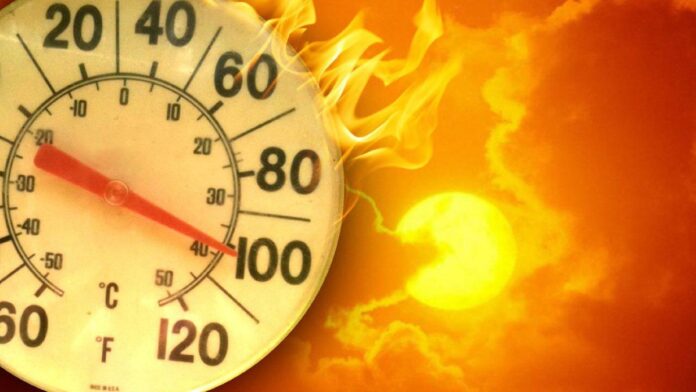With no rainfall in sight and continued heat plaguing the Rio Grande Valley, the only way the area can get enough water into its reservoirs to help prevent water shortages is for a tropical storm or energy of tropical moisture to pass over the area, a local meteorologist said.
Barry Goldsmith, warning coordination meteorologist for the National Weather Service in Brownsville/Rio Grande Valley, states the extreme heat the RGV is experiencing will continue and with no rain in sight, the low water levels in the reservoirs “could put significant stress on water supplies/availability for much of the Lower Rio Grande Valley heading into late summer.”
“Currently, there is no sign in the pattern for a series of tropical waves, and it is unknown exactly how the Atlantic Basin will evolve as we head slowly toward the peak of the season (September 10th),” writes Goldsmith.
The last time reservoirs saw water levels this low was in 2002, Goldsmith writes in his report, and said there is an increasing chance that “new 30-years lows will be achieved in the next month, rivaling very low levels last seen in the late 1990s.”
The reservoirs supply water to the RGV. The water levels at Amistad are at 24% and13% in Falcon.
The last rainfall the Valley had was on May 24/25. Rainfall since then has been 5 to 25% of average, which is generally between 4 to 5 inches. “The lack of rain along with the heat, has dried up/is drying up water in local detention ponds and other holding areas,” Goldsmith stated.
The lack of rainfall has prompted several cities in the Valley to implement water conservation plans. Some allow residents to water their lawns on certain days and between certain hours of the day.
Goldsmith states longer range consensus forecasts indicate the hot and dry weather the Valley is experiencing now will continue into August.
September will be critical to the area’s future water supply since September is usually the wettest month, with rainfall amounts of 4.5 inches to more than 6 inches. Goldsmith said “the continuation of La Nina into late fall and winter 2022/2023 will favor continued drier and warmer than average conditions – on top of the normally drier season that typically begins in mid-October.”
Because the dry conditions are expected to continue Goldsmith said, “Conservation is a must now, but water use restrictions are likely to proliferate.” He said growers should use smart irrigation techniques where feasible.
Residents can also do their part to conserve water by taking shorter showers, turning off faucets when not using water to clean or rinse, water lawns infrequently and only during the pre-dawn hours, let grass grow for several weeks to lock in any water that may remain in the subsoil, consider water harvesting and xeriscaping.
According to the NWS, the next five days in the RGV will be hot and breezy with daytime temperatures between 96 to 106 degrees. The overnight lows will be between 75 to 79 degrees.




